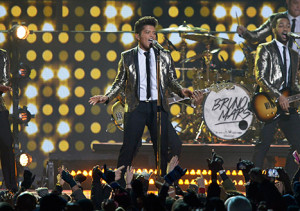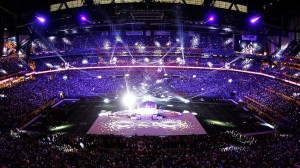What All Goes Into a Super Bowl Halftime Show?
This year’s upcoming Super Bowl Halftime headliner was recently announced, and Maroon 5 will take their place on that iconic stage. While not everyone is happy about this announcement, it does lead us to another question — what really goes into creating those massive halftime shows?
Planning Comes First
The planning stage takes the longest. The Superbowl is usually played in February, and the planning stage will start the June before the big game starts. This is what experts call the “nuts and bolts” stage — figuring out how to put together a massive show and get it all on the field in six minutes.
Yes, you read that right — in just six minutes the entire stage gets set up. This is when the show planners figure out the technical side of things, such as where to put the broadcast trucks, where to position the speakers to create the most optimum sound and how they’re going to plug in all the toys.
Lighting and Sound Next
The next stage doesn’t start until September, and that’s the creative stage. It’s during this stage where the performers will decide whether they want to sing live, lip sync or do some combination of the two. Some performers refuse to use anything, even backing vocals, while others will lip-sync during particularly difficult parts of their performance.
This is when the performer is selected as well. That gives the team six months to figure out how to make the performer’s dream come to life. They also figure out what is actually practical and what’s impossible in the 14 minutes that make up the halftime show.
This is when the songs get picked, the backup dancers and singers get cast, the sets get designed and built and the lighting and sound get designed. Lighting is especially important — it’s up to the lighting engineer to pick the right colors and shades of lighting to create an awesome show without washing out the singer or making it hard for the audience to see what’s happening on stage.
Breakdown
Once the show is over, the crew’s job isn’t done yet — they have just six minutes to break down the entire stage and get the field back to the point so the other half of the game can get played. That means taking down the stage, moving all the speakers and other additions on the field and get them out of the way quickly and safely. However, sometimes people do get hurt as everyone rushes to get the field back to its previous state.
Everyone on the crew is at their best when it comes down to making the show work — down to one stagehand who held two live wires together for twelve minutes during the 2007 halftime show to make sure the stage had power. It’s definitely not safe, but the crew will do whatever it takes to make sure the show goes off without a hitch — especially since the entire world is watching.
The Next Time You Watch
Even people who don’t watch football will watch the Super Bowl just for the commercials and the halftime show. Now you have a better idea of what goes into creating those massive shows — including the crew of hundreds that put together the stage and break it down in six minutes.

